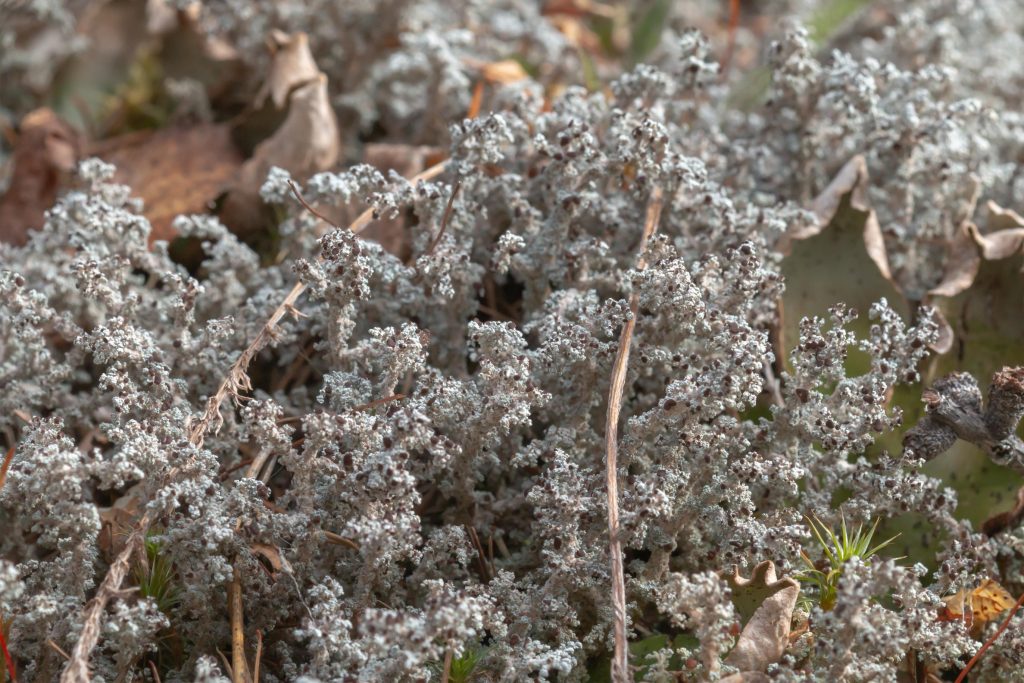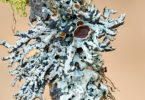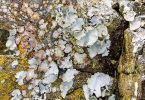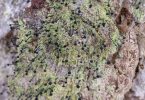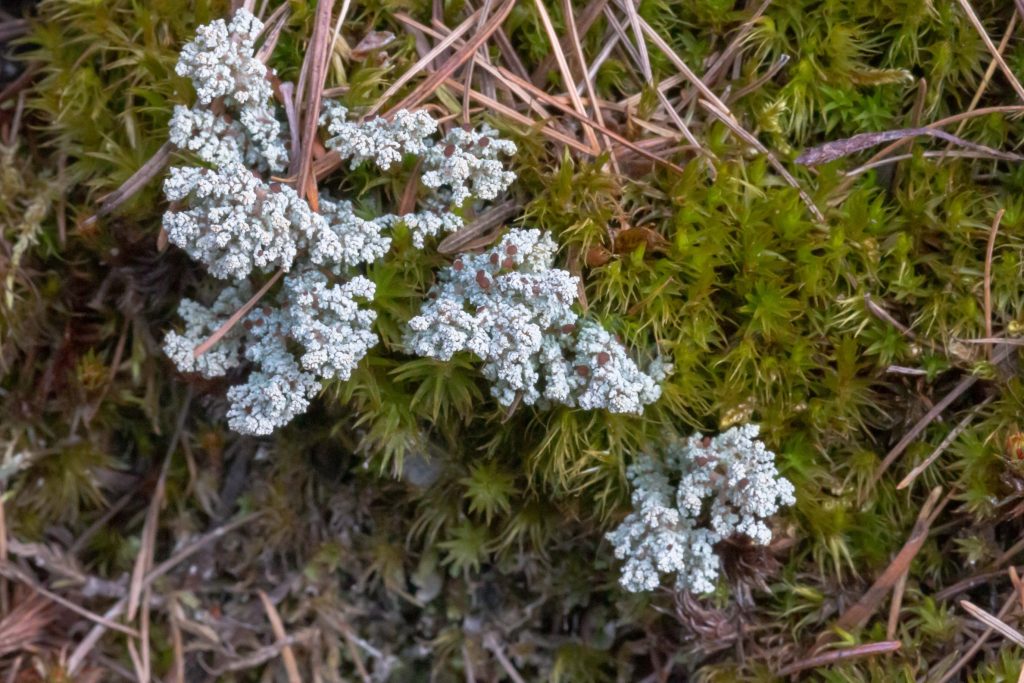
Wooly Foam Lichen (Stereocaulon tomentosum)
After snow melt in spring this lichen resembles remaining small patches of snow. Like the other 33 species of the Stereocaulon genus it is unmistakable. It doesn’t look like a wildflower (no leaves), moss (not green with single cell thick leaf), fern (again, no leaves), or fungus.
Closer looks reveal it looks more like a soapy foam with brown dirt particles (photo below). That “brown dirt” is actually apothecia, technical term for reproductive structures that produce spores. The structure and color also easily differentiate it from other lichen. In parts of the Boreal Forest a foam lichen is the main ground cover (Brodo, Sharnoff and Sharnoff 2003).
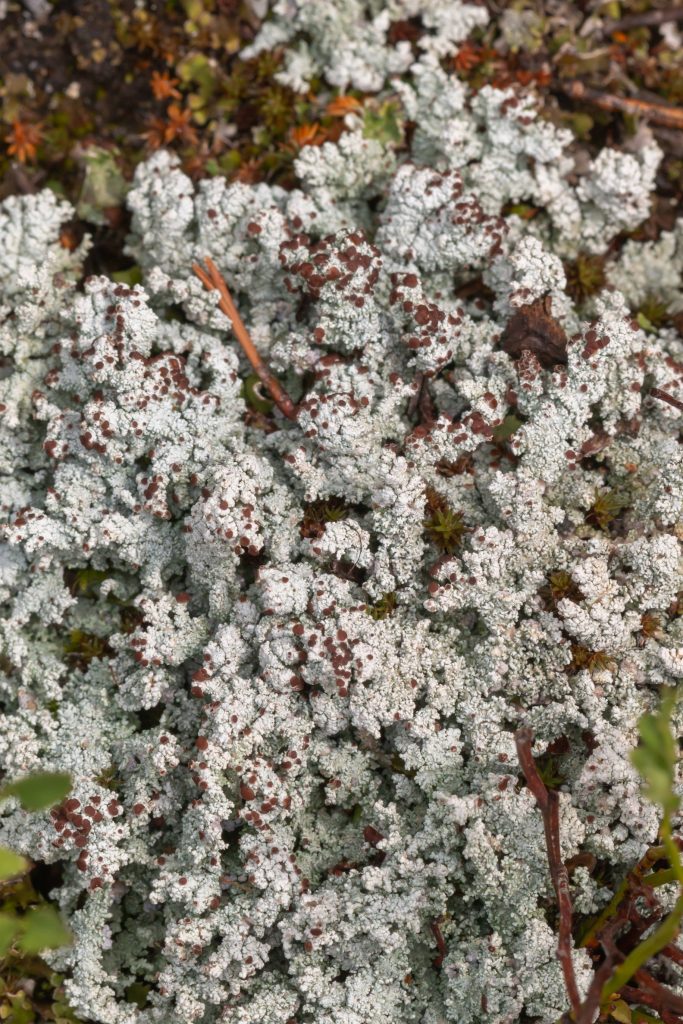
This whitish colored lichen emerges from winter unscathed. Many temperate lichen are not negatively affected by snow and cold. The same could be said of lichens in hot and dry climates. It is interesting to note that lichen are the dominant organisms of Earth’s coldest and hottest regions (Brodo, Sharnoff and Sharnoff 2003).
Geography
Wooly Foam Lichen is found broadly over much of Canada, but only in parts of the U.S.: the Pacific Northwest, upper Midwest and the Northeast. The substrate (analogous to soil types for certain plants to grow in certain places) on which this lichen grows is rock, soil or within a bed of moss (top photo) – typical components of a forested environment.
How to find
Particularly good places to find these lichen are road cuts/shoulders in mountainous National Forests lands. McCune and Geiser (2009) also recommend talus slopes and rocky outcrops. Below is a side view photo of this lichen giving you a better mental search image. It is somewhat “spindly” looking (not fragile though) from this perspective; it grows 1 to 4 inches in height.
